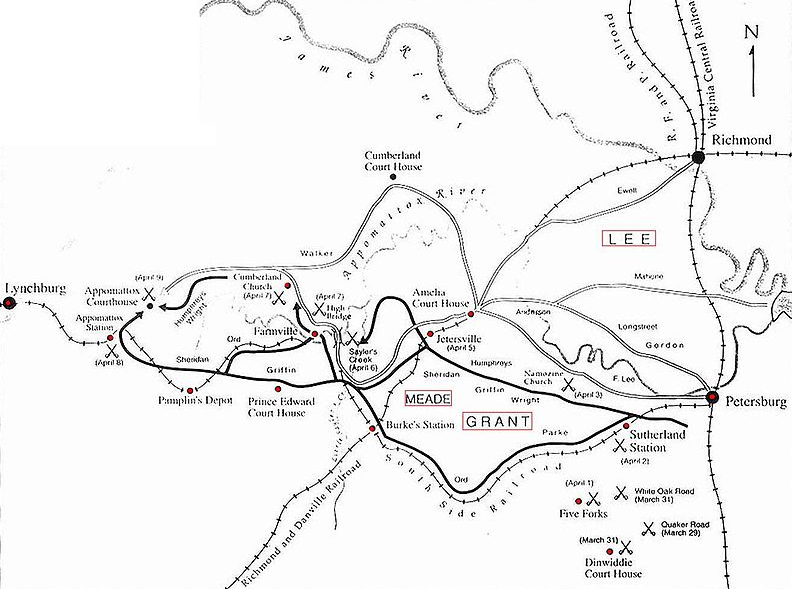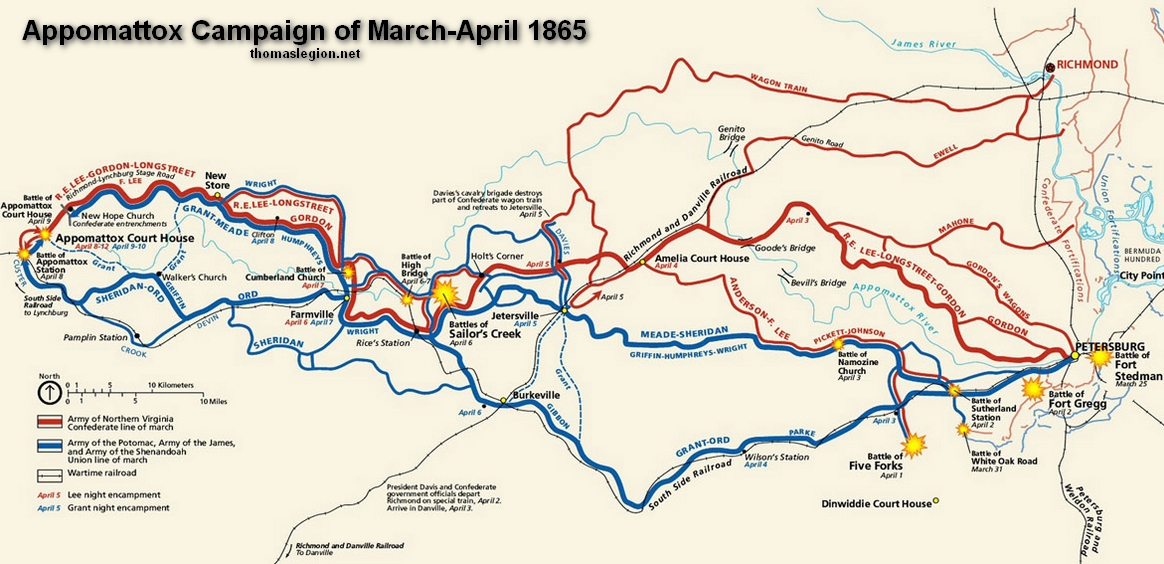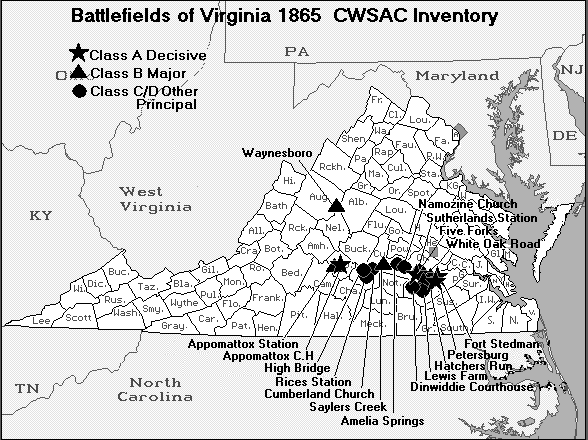|
THE CIVIL WAR SURRENDER AT APPOMATTOX, VIRGINIA
| Civil War Surrender Appomattox Virginia Map |

|
| American Civil War Appomattox Virginia Campaign Surrender Map |
Wars end in many different ways. Limited wars often end with negotiated settlements. The American Civil
War - involving such vital issues as preserving the Union, freeing the slaves, and struggling for Southern independence -
could not be settled that way. It had to be fought to a military conclusion. That conclusion came some 142 years ago this
week, on April 9, 1865. After four bloody years of Civil War, Confederate General Robert E. Lee surrendered to the United
States Army under General Ulysses S. Grant at Appomattox Court House in southern Virginia. General Lee and his troops had
capitulated. Even the negotiating table became a prize of war. For General Grant and his President, Abraham Lincoln, their
national goal was not negotiation, not even peace, but lasting victory. They achieved that victory at Appomattox.
Yet
they understood that for victory to last, it must treat the vanquished with consideration. The surrender terms paroled Southern
soldiers on the spot rather than incarcerate them in prisoner-of-war camps. Their officers, moreover, were permitted to retain
their side arms, horses, and personal baggage. Allowing such retention "will have a very happy effect upon my army," General
Lee gratefully acknowledged at the time. On learning that Confederate soldiers owned their military horses and mules, General
Grant went on to make clear that any soldiers claiming such steeds would be permitted to "take the animals home with them
to work their little farms." "This will have the best possible effect upon the men," General Lee thankfully responded; "it
will be very gratifying and will do much toward conciliating our people." Thus did two great American commanders, who had
clashed on dozens of battlefields over the preceding eleven months, honor each other - and their soldiers - in the course
of surrender.
| Appomattox Court House Surrender |

|
| Appomattox Campaign Battles Leading to Surrender of Lee's Army |
| Civil War Surrender Appomattox Virginia |

|
| American Civil War Surrender at Appomattox Court House |
Those soldiers themselves, who had gained a grudging respect for one another in four years of Civil War,
also made clear that respect at the very end. On April 12, when the Confederate Army of Northern Virginia made its final march
to stack arms and lay down its battle flags, the Federal division designated to receive the surrender did not mock its vanquished
foe with taunts and cheers. Instead, the Federal soldiers snapped to attention and stood silent. The Graycoats returned the
honor by shifting into formal marching order.
Within three months after Appomattox, the Civil War ended. Reconstruction,
readjustment, reconciliation would take decades. Our reunited country now recognizes both General Grant and General Lee, both
the Federal Army and Confederate Army, as part of our common heritage. The generous surrender terms of Appomattox were the
first steps on that road to reconciliation. So, too, was General Grant's realization that one of the surest roads to peace
is VICTORY.
April 8, 2007
By Dr. Richard J. Sommers, U.S. Army Military History Institute,
U.S. Army Heritage and Education Center
Try the Search Engine for Related Studies: Appomattox Court House Virginia Surrendered Confederate General
Robert E. Lee United States Army General U S Grant President Abraham Lincoln Confederate Soldiers Paroled Civil War Reconstruction
|

